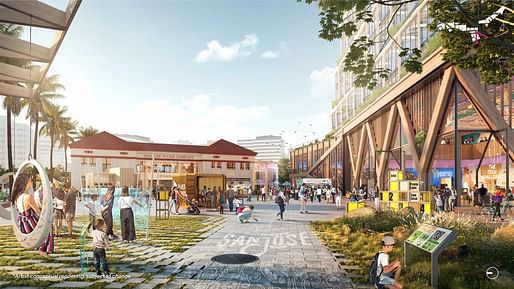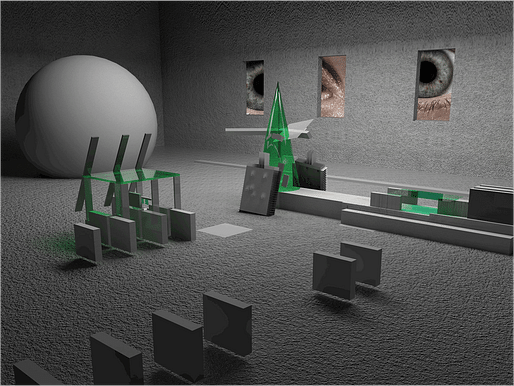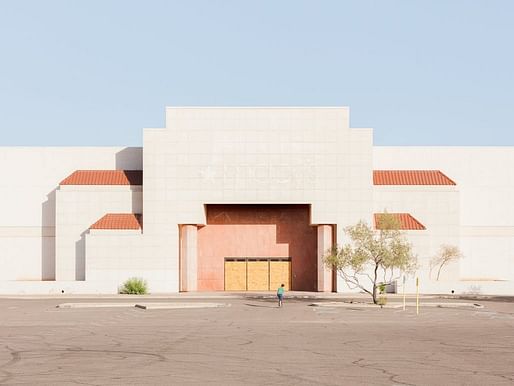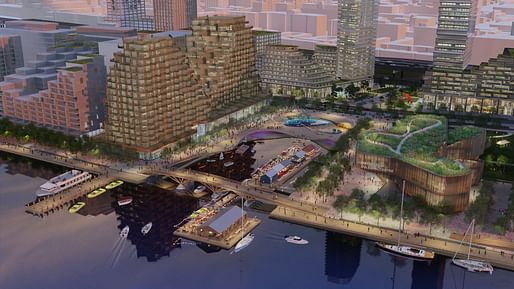

Over recent weeks, Facebook’s rebranding and embrace of the metaverse has added a further dynamic to the role of digital space in our future lives. While the definition of the metaverse has been adapted numerous times since its coining in Neal Stephenson’s cyberpunk novel Snow Crash in 1992, Facebook founder Mark Zuckerberg describes it as an immersive digital experience where users can “do almost anything you can imagine—get together with friends and family, work, learn, play, shop, create—as well as entirely new categories that don't really fit how we think about computers or phones today.”
The recent discourse surrounding the metaverse is of interest to architects for two reasons. Facebook is far from the first company to imagine or build a metaverse; adaptable virtual worlds have captured our fascination for decades through games such as Fortnite, Minecraft, Sims, or World of Warcraft. In our previous interview with Kazys Varnelis from the Network Architecture Lab, we discussed how such metaverses offer opportunities for architects to break the barriers of gravity and physical dimensions to redefine spatial experiences.
With games, we are architects not of buildings but of realities
“With games, we are architects not of buildings but of realities,” Varnelis told us back in 2017. “Games allow us to test these realities, examine our relationships with others and reflect upon the reality we live in. In a situation that appears impossible, games allow us insight into why the situation is impossible and what caused that and they allow us to discover possibilities we previously didn't know existed.”

Beyond the boundless design possibilities that the metaverse may afford architects and designers, Facebook’s renewed interest in shaping designed, immersive, virtual environments also speaks to the relationship between architecture and ‘big tech.’
Over recent years, we have seen numerous examples of large tech companies taking a lead on the evolution of living environments, whether digital or physical. In the past three years alone, Facebook has announced plans to invest $150 million to build 2,000 affordable homes in the Bay Area, as well as a more ambitious plan to construct a 59-acre neighborhood adjacent to its Menlo Park headquarters. The design of Willow Village, also dubbed Zucktown and Facebookville, includes a commercial core, 1,700 apartments, a hotel, 1.25 million square feet of office space, and an elevated park. Writing about Willow Village in 2018, The New York Times reflected that “it is a project with many precedents in American history, quite a few of them cautionary tales about what happens when a powerful corporation takes control of civic life.”

Facebook is by no means the only tech giant shaping the built environment. Earlier this year, we reported on Amazon’s emerging practice of buying up empty shopping malls to be repurposed as fulfillment centers, asking if the move was a positive act of adaptive reuse, or a giant online retailer eating its prey. In 2017, meanwhile, it emerged that Bill Gates had spent $80 billion buying up 25,000 acres of land in Arizona to construct a smart city with 80,000 residential units, 3,800 acres of office, commercial, and retail space, and 470 acres for public schools.
Among the tech giants, Google has demonstrated the most sustained engagement with architecture and design in recent years. Earlier this year, we reported on the company’s Downtown West mega campus gaining city approval in San Jose, California, set to deliver 7.3 million square feet of office space and thousands of homes for 20,000 workers across an 80-acre site. In addition, Google’s parent company Alphabet is the owner of urban innovation company Sidewalk Labs which, up until recently, was involved in an ambitious plan to transform Toronto’s Quayside into one of North America’s largest smart cities.

Underlying the company’s innovations in cities and future living is Google R+D for the Built Environment, an in-house ideas workshop that introduces itself as “architects, engineers, researchers, designers, inventors, dreamers and builders who are obsessed with meaningfully shaping our environment.” The several open positions at Google R+D for the Built Environment demonstrate the active involvement of architects and designers in the relationship between tech giants and cities.
Over on our Jobs Board, the company is currently recruiting a Project Manager, an Operations Project Manager, and a Senior Technology Innovations Manager to join their team at Mountain View, CA. Projects undertaken by the team range “from the scale of the desk to the scale of the district” with a mission of “generating ideas and prototypes that deliver immediate tangible value, and project a resilient, resource-efficient, technologically-enriched and beautiful future.”

The involvement of architects and designers in tech companies speaks to a theme that is often present on our Jobs Board and editorial: the ability of architects and designers to engage with employment and business opportunities beyond typical firm structures and client commissions. These boundless possibilities were particularly evident in our recent conversation with acclaimed media artist Refik Anadol, who when reflecting on the future role of architects in virtual space, said: “I don’t believe that giving a particular function to a building in the physical environment is the architecture of the future. I feel that, perhaps, the future of sensing space is in our mind.”
--
As part of Archinect's job highlights series, we recently showcased an opportunity to work as a Climate Action Coordinator at KieranTimberlake, an Architect at tech startup Zenerate, and an Architect at Soho House,
Stay up to date with the latest job listings by following Archinect Job's Facebook, Twitter, and Architect Jobs Instagram for new job opportunities posted. Archinect's industry-leading job board publishes approximately 150 new opportunities every week.
2 Comments
Yha stealing ppls private info reselling it and profit from it, this alphabet? Yeah it's the Google ads company, Google, Facebook, Amazon you buy into their city dreams you will wake up as a slave In all possible meanings
“With games, we are architects not of buildings but of virtual realities,”
There, fixed it for you.
Do you think Zuckerberg uses an ad blocker?
Block this user
Are you sure you want to block this user and hide all related comments throughout the site?
Archinect
This is your first comment on Archinect. Your comment will be visible once approved.